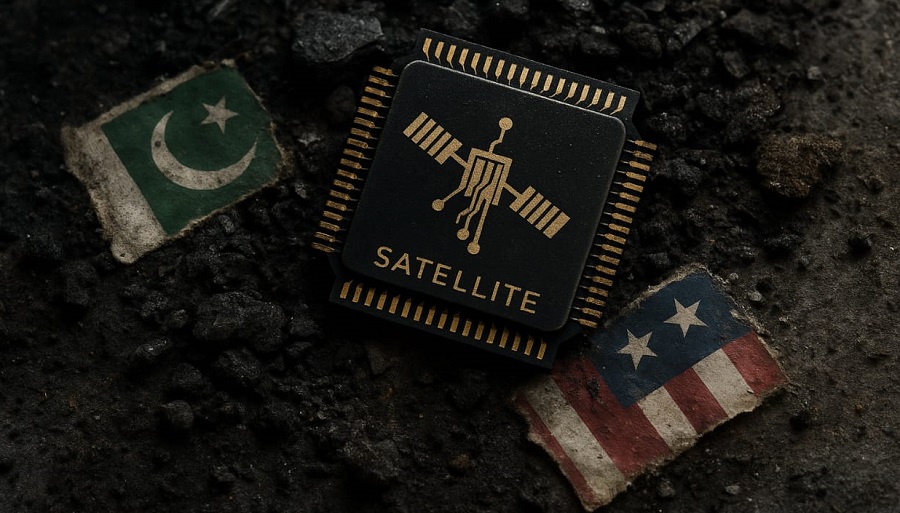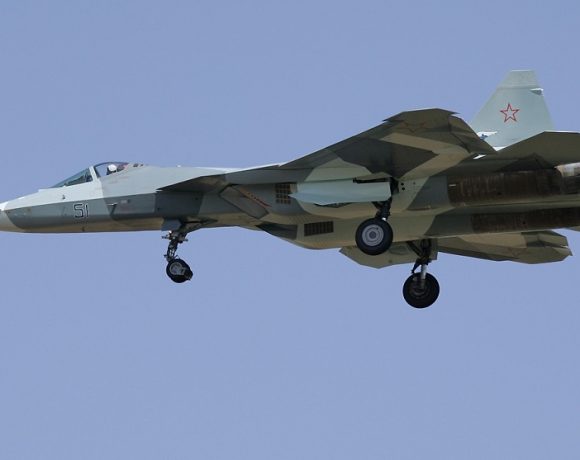
The Missing Partner: Maxar, BSI, and a Chain of Unanswered Questions Before Pahalgam
By Statscope Research India [www.statscope.in]
On April 22, 2025, the serene valley town of Pahalgam in Jammu and Kashmir was rocked by a devastating terrorist attack that claimed 26 lives — a combination of soldiers and civilians. The operation was surgical, precise, and deeply coordinated. Within hours, Indian intelligence officials pointed fingers squarely at Pakistan’s military-intelligence apparatus. But what enabled the precision of this cross-border act of terror?
In the days and weeks that followed, attention turned not only to the attackers but to an unusual flurry of satellite activity that preceded the strike. Satellite imagery requests, it turned out, had been pouring in for the Pahalgam sector in the month of February — requests that were double the usual volume. They came through Maxar Technologies, a U.S. satellite imagery giant with long-standing contracts with the CIA and the U.S. Department of Defense.
But the real shock emerged when one name appeared in that trail: Business Systems International (BSI), a firm run by Obaidullah Syed — a man convicted by a U.S. federal court in 2020 for illegally exporting imagery software and hardware to Pakistan’s nuclear agencies. Somehow, Syed’s firm had regained access to Maxar in 2023. And somehow, it was making imaging requests for sensitive Indian sectors — again.
This is not an accusation. This is a timeline of facts, made public through government filings, court records, satellite access logs, and silence. We raise no claims. We offer no insinuations. We ask only that the questions be asked — before another Pahalgam happens again.
Timeline of Events
2009
William J. Burns, then U.S. Under Secretary of State for Political Affairs, visits India and makes a notable statement on Kashmir: “The aspirations of the Kashmiri people must be considered in any resolution.” The statement is welcomed by separatist factions and noted by Pakistan’s diplomatic corps.
2020–2022
Obaidullah Syed, a Pakistani-American, is convicted in the Northern District of Illinois for exporting controlled satellite imaging software and server hardware to Pakistan’s nuclear agencies — namely PAEC and NDC — in violation of U.S. export laws. His company, Business Systems International (BSI), is tied to both U.S. and Pakistani arms procurement chains.
2021
Now appointed CIA Director, William Burns undertakes a secretive visit to South Asia. He meets India’s NSA Ajit Doval in New Delhi and Pakistan’s ISI chief Faiz Hameed and Army General Qamar Bajwa in Islamabad. The topic: post-Afghanistan intelligence coordination and regional security. The visit is not disclosed publicly until months later.
December 2023
General Asim Munir, Pakistan’s Army Chief, undertakes an official U.S. visit — the first such visit by a Pakistani military chief in 8 years.
During his trip, he meets CIA Director William Burns, Secretary of Defense Lloyd Austin, NSA Jake Sullivan, and Chairman of the Joint Chiefs Gen. Charles Q. Brown Jr.
Near about the same time, Maxar Technologies, a key contractor to the CIA, NRO, and NGA, quietly adds BSI as a commercial partner. This happens despite Syed’s criminal record, raising questions about the vetting process. Maxar remains under classified data-sharing arrangements with U.S. agencies at this time.
October 2024
The U.S. Commerce Department publicly blacklists 16 Pakistani entities for acting as front companies aiding Pakistan’s missile and nuclear programs. But BSI — despite its past conviction — is not on this list. No explanation is offered.
February 2–22, 2025
Maxar receives 12 imaging requests focused on the Pahalgam region — an unusually high volume concentrated in a small time window. The requests appear to align with troop movement corridors and military logistic routes. No internal alerts are known to have been triggered.
April 22, 2025
Pahalgam is attacked. A high-profile, coordinated assault leaves 26 dead. Indian intelligence attributes the attack to Pakistan’s military-intelligence nexus. Maxar quietly removes BSI from its partner list days later.
II. The Questions That Must Be Asked
For a timeline so precise, the number of institutional lapses appears just as glaring. From compliance breakdowns and oversight failures to public silence from agencies responsible for guarding sensitive satellite infrastructure, each segment invites its own set of questions — not of accusation, but of accountability.
1. The Compliance Black Hole: Maxar, CIA, and the Quiet Clearance
Maxar Technologies is not a casual commercial firm in the satellite business. It is a direct contractor to the CIA, NRO, NGA, and the Department of Defense. Through contracts such as EnhancedView and the Global Enhanced GEOINT Delivery (G-EGD) program, Maxar supplies high-resolution imagery that powers U.S. battlefield operations, counterterrorism strikes, and surveillance missions across the globe.
Its platforms are hardwired into U.S. national security. Vetting and onboarding of partners — especially those with access to high-resolution imagery tasking — are supposed to be subjected to export controls, OFAC screenings, and national security reviews.
So when Business Systems International (BSI), a company whose owner had been convicted by a U.S. federal court for illegally exporting satellite tech to Pakistan’s nuclear weapons complex, was onboarded in 2023 as a Maxar commercial partner, the obvious question is: how?
Did Maxar’s internal compliance fail?
Was their denied parties screening system outdated?
Did BSI use a rebranded alias to bypass red flags?
Or was this known and allowed — by someone in Maxar, or someone who has influence over Maxar?
Given Maxar’s deep entanglement with the CIA and its oversight protocols, it is inconceivable that a known nuclear tech violator could gain access to its platforms — unless someone deliberately chose not to block it.
2. The Silence of the Watchers
Between February 2 and 22, 2025, 12 separate image tasking requests were registered with Maxar, targeting the Pahalgam sector of Jammu & Kashmir. This region is not only a strategic mountain route — it is a known military zone and a pilgrimage corridor. The volume of requests was almost double the monthly average.
Did no one at Maxar’s operations center raise an eyebrow?
Were the requests reviewed by compliance or national security liaison officers?
And most crucially — did the CIA, NGA, or NRO receive any alerts?
Maxar operates under the oversight of U.S. intelligence. That relationship comes not just with funding, but with a duty to report suspicious activity. What happened here?
Was it missed, ignored, or monitored and allowed under a larger strategic doctrine?
3. The List That Left One Out
In October 2024, the U.S. Department of Commerce’s Bureau of Industry and Security (BIS) released a list of 16 Pakistani front companies blacklisted for aiding missile and nuclear weapons development. Nine of them were specifically linked to AERO, a long-sanctioned military research arm of Pakistan.
BSI — the company whose CEO was already convicted in a U.S. court for aiding Pakistan’s nuclear complex — was not on the list.
Why?
Was it simply forgotten?
Did BSI lobby or litigate its way into the blind spot?
Or was there another reason — diplomatic, strategic, or covert?
In the world of export controls, such omissions are not clerical accidents. They are often deliberate decisions — and they are almost never explained.
4. The Timeline Coincidence
Pahalgam was surveyed from space in February.
Pahalgam was attacked in April.
The imaging requests were made through a known violator’s pipeline.
The entity — BSI — had historic links to Pakistan’s Army and ISI.
The attack that followed was surgical in its precision.
Coincidence? Or consequence?
No one can answer that definitively — but no serious intelligence analyst would ignore the connection.
5. The Burns Meetings
William J. Burns is a seasoned diplomat. He’s known for deep strategic engagements — from Moscow to Tehran. In 2021, as CIA Director, he met with Pakistan’s most powerful men: General Qamar Bajwa and ISI chief Faiz Hameed.
It was a quiet, unpublicized meeting. Afghanistan was the pretext.
What else was discussed, no one knows.
But what followed in the next two years — the re-entry of BSI into Maxar, the satellite tasking surge, and the Pahalgam attack — forms a sequence that now deserves scrutiny.
Did anything discussed in that 2021 meeting influence what came after?
We do not claim it did. But we ask — because it is our responsibility to ask.
III. Conjecture vs. Caution
What we have laid out above is a sequence of documented facts — from legal indictments and public contracts to image logs, official blacklists, and confirmed attacks. We do not offer accusations. We offer a timeline. And yet, that timeline is impossible to ignore.
It is tempting to draw lines that suggest intent, to presume complicity, or to claim infiltration. We do not. The story of how a convicted nuclear technology exporter regained access to a CIA-linked satellite provider and was active just weeks before a mass-casualty terror strike — that story tells itself.
But we remain cautious.
There are explanations, possibly even benign ones, for each segment. Bureaucratic fatigue. Commercial oversight. Political hesitation. Intelligence games gone wrong. But these explanations, if they exist, have not been offered by those responsible. They have not been shared by Maxar, the CIA, or the Department of Commerce.
All that exists — at this moment — is silence.
And it is that silence that makes the questions louder.
As Darshan Walawalkar, Partner at Statscope Research India, puts it:
“We are not alleging. We are asking. We are not implying a conspiracy — we are tracing a chronology. And when a chronology looks this clean, this consequential, and yet this unexamined, it becomes not just the right, but the duty of any researcher, analyst, or citizen to ask: what the hell happened here?”
IV. Conclusion: We Ask, You Decide
We began this report not with a theory, but with an attack. We followed the trail not with speculation, but with documents, records, and institutional silence.
We do not claim that the CIA enabled Pahalgam.
We do not claim that Maxar was complicit.
We do not claim that BSI was the conduit.
We only claim that this happened.
And we ask that those with more power than us — lawmakers, media, and the public — do what those entrusted with this data did not.
Ask.
Because if this is how quietly it can happen once, what’s to stop it from happening again?


















